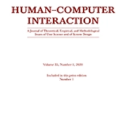In today's connected society, many people rely on mHealth and self-tracking (ST) technology to help them break their sedentary lifestyle and stay fit. However, there is scarce evidence of such technological interventions' effectiveness, and there are no standardized methods to evaluate the short- and long-term impact of such technologies on people's physical activity and health. This work aims to help ST and HCI practitioners and researchers by empowering them with systematic guidelines and an extensible framework for constructing such technological interventions. This survey and the proposed design and evaluation framework aim to contribute to health behavior change and user engagement sustainability. To this end, we conduct a literature review of 117 papers between 2008 and 2020, which identifies the core ST HCI design methods and their efficacy, as well as and the most comprehensive list to date of user engagement evaluation metrics for ST. Based on the review's findings, we propose the PAST SELF end-to-end framework to facilitate the classification, design, and evaluation of ST technology. PAST SELF systematically organizes common methods and guidelines from existing works in ubiquitous ST research. Hence, it has potential applications in industrial and scientific settings and can be utilized by practitioners and researchers alike.
翻译:在当今相互联系的社会中,许多人依靠健康和自我跟踪技术帮助他们打破定居的生活方式和保持适应,然而,很少证据表明这种技术干预的有效性,也没有标准化的方法来评价这种技术对人的体育活动和健康产生的短期和长期影响,这项工作的目的是通过赋予ST和HCI从业人员和研究人员以系统的指导方针和构建这种技术干预措施的扩展框架,帮助他们获得系统的指导方针和扩展框架,这项调查以及拟议的设计和评价框架旨在促进健康行为的变化和用户参与的可持续性。为此,我们在2008年至2020年期间对117份文件进行了文献审查,其中确定了ST HCI的核心设计方法及其效力,以及迄今为止最全面的ST用户参与评价指标清单。根据审查结果,我们提议PST SELF的终端到终端框架,以促进ST技术的分类、设计和评估。PAST SELF系统从现有的科技研究工作中系统地组织共同的方法和准则。因此,它有可能在工业和科学环境中的应用,研究人员可以使用。





